Fiction
I have been reading these fiction books since the beginning of 2019. I like non-fiction but have started reading fiction since the love of my life passed away.
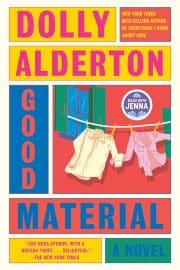
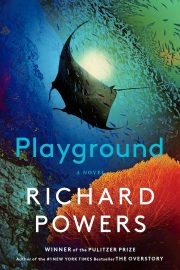
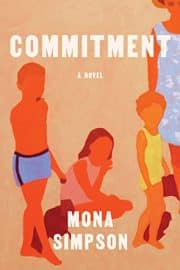

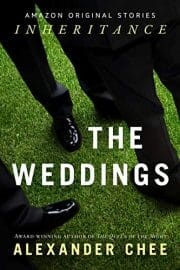
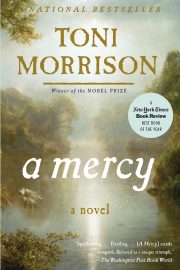
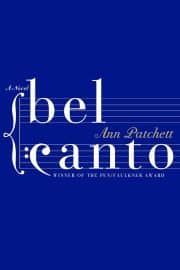
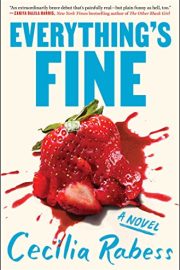
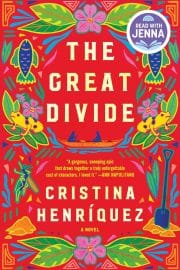
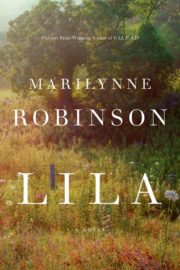
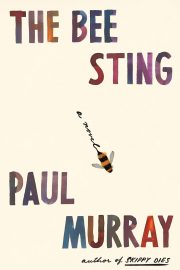
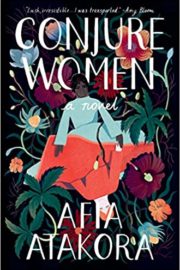
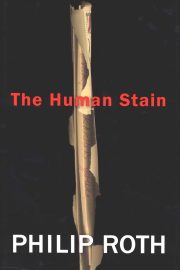
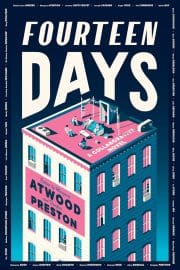
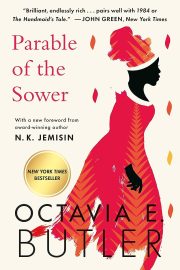
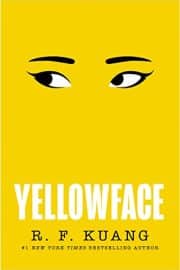
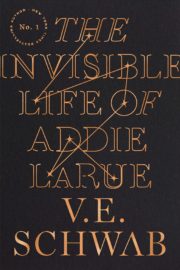
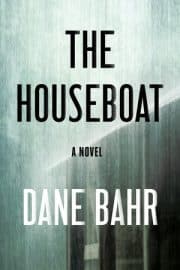
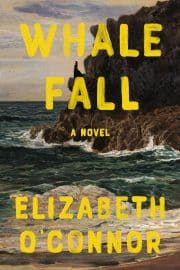
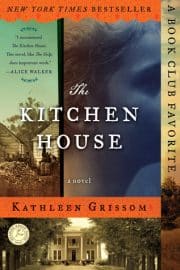
Contact US!
Have a question? Suggestion?
by Dolly Alderton
Today, I started reading “Good Material: A Novel” by Dolly Alderton, the bestselling author of “Ghosts” and “Everything I Know About Love.” This book has been listed as one of The New York Times 100 Notable Books of 2024 and is among their 10 Best Books of 2024. So far, I have read three of the top five fiction books of 2024: “All Fours,” “James,” and “Martyr!.” I plan to read the fifth book, “You Dreamed of Empires,” next.
“Good Material” has received widespread acclaim for exploring heartbreak, friendship, and the various ways to cope with these experiences.
Andy loves Jen. Jen loved Andy. And he can’t work out why she stopped.
Now he is. . .
Without a home
Waiting for his stand-up career to take off
Wondering why everyone else around him seemed to have grown up while he wasn’t looking
Set adrift in the sea of heartbreak, Andy clings to the idea of solving the puzzle of his ruined relationship. Because if he can find the answer, Jen may find her way back to him. But Andy still has much to learn, not least his ex-girlfriend’s side of the story…
In this sharply funny and exquisitely relatable story of romantic disaster and friendship, Dolly Alderton offers up a love story with two endings, demonstrating again why she is one of the most exciting writers today and the authentic voice of a generation. Her writing feels like a conversation with a close friend, making you feel understood and seen.
When you purchase a book through one of my links, I earn a small commission that helps support my passion for reading. This contribution allows me to buy even more books to share with you, creating an incredible cycle of discovering great reads together! Your support truly makes a difference!
by Richard Powers
I started reading “Playground: A Novel” by Richard Powers today. This remarkable new novel comes from the Pulitzer Prize-winning and New York Times best-selling author of “The Overstory” and “Bewilderment.” Even more astonishing is that this marks my three hundredth book since I embarked on this reading journey on January 1, 2019! I’m also enjoying “Judaism Is About Love,” which means “Playground: A Novel” will be my 98th or 99th book in 2024.
In this sweeping, panoramic novel, four lives intertwine, showcasing Richard Powers at the height of his skills. Twelve-year-old Evie Beaulieu finds herself at the bottom of a swimming pool in Montreal, strapped to one of the world’s first aqua lungs. Ina Aroita grows up on naval bases across the Pacific, finding solace in art as her only home. At an elite high school in Chicago, two opposites bond over a three-thousand-year-old board game: Rafi Young gets lost in literature, while Todd Keane’s work leads to a startling breakthrough in artificial intelligence.
Their paths converge on the history-laden island of Makatea in French Polynesia, once known for its phosphorus deposits that helped sustain the world. This tiny atoll has been chosen for a groundbreaking venture: a plan to create floating, autonomous cities to venture out onto the open sea. However, the island’s residents must vote to approve the project or turn the seasteaders away.
Set against the world’s most enormous ocean backdrop, this awe-inspiring book delves into the last wild place we have yet to colonize, exploring a still-unfolding oceanic narrative. It beautifully weaves rich characters, profound themes of technology and the environment, and a deep examination of our shared humanity—and exploration that only Richard Powers can deliver.
When you purchase a book through one of my links, I earn a small commission that helps support my passion for reading. This contribution allows me to buy even more books to share with you, creating an incredible cycle of discovering great reads together! Your support truly makes a difference!
by Mona Simpson
The novel Commitment by Mona Simpson delves into the complexities of family and duty when a parent falls ill. It sheds light on the significant impact of untreated mental health crises and highlights the under-appreciated role of friends in shaping the lives of children left to their own devices.
A hardworking single mother, Diane Aziz falls into a deep depression after dropping off her oldest son, Walter, at college. Despite her struggles, her closest friend is vital in keeping the family together and their mother’s dreams alive.
This is a story of one family’s struggle to navigate the crisis of their lives, a struggle that may resonate with many readers. Walter discovers a newfound passion for architecture, but financial struggles threaten his academic pursuits. Meanwhile, Lina fights to attend an Ivy League school, and Donny, the youngest sibling, battles a dangerous drug addiction.
As someone with different personal experiences, I still found Commitment to affirm the importance of biological and chosen families.
The Jan Lilien Education Fund sponsors ongoing sustainability and environmental awareness programs. Gifts made this month; I will match dollar-for-dollar. All donations are tax-deductible.
I receive a commission when you buy a book or product using a link on this page. Thank you for supporting Sharing Jan’s Love blog.
by Claire Keegan
Today, I read “Small Things Like These” by Claire Keegan, one of the New York Times’s 100 Best Books of the 21st Century, and the seventeenth book I have read from that list. “Small Things Like These” is award-winning author Claire Keegan‘s landmark new novel, a tale of one man’s courage and a remarkable portrait of love and family.
The story is set in 1985 in a small Irish town. During the weeks leading up to Christmas, Bill Furlong, a coal merchant and family man, faces his busiest season. Early one morning, while delivering an order to the local convent, Bill makes a discovery that forces him to confront his past and the complicit silences of a town controlled by the church.
I found this short but well-written novel very impactful. The following quote explains the powerful impact of the need for meaning and purpose in our lives as Furlong walks in the snow after taking action after bringing home a young girl from a Magdalen laundry. How often can we ignore the small things like these and still look ourselves in the mirror?
“As they carried on along and met more people Furlong did and did not know, he found himself asking was there any point in being alive without helping one another? Was it possible to carry on along through all the years, the decades, through an entire life, without once being brave enough to go against what was there and yet call yourself a Christian, and face yourself in the mirror?”
As an international bestseller, ‘Small Things Like These‘ is a profoundly moving story of hope and quiet heroism. It’s a narrative that will make you admire the characters and stir your empathy, all crafted by one of our most critically acclaimed and iconic writers. The characters in the story are so relatable that you will feel understood and deeply invested in their journey.
by Alexander Chee
Today I read The Weddings by Alexander Chee. It is the fifth and last book in Inheritance, a collection of five stories about secrets, unspoken desires, and dangerous revelations between loved ones. For Jack Cho, a fortysomething gay man, being able to marry someone he loves is so unfamiliar it’s terrifying. Then a wedding invitation from a college friend brings about a collision with those fears—and his secret history.
I have always enjoyed weddings. I attended the last one when my younger son married in July 2021. Not sure if I will ever participate in another wedding.
I have attended many diverse weddings but never one with as many secret histories. To avoid revealing the secrets, I will state that The Weddings is well written, each moment is precise, and the mysteries are neither shocking nor disruptive to the story.
I highly recommend The Weddings.
Each Inheritance piece can be read or listened to in a single setting. By yourself, behind closed doors, or shared with someone you trust. The Weddings is the fifth one in the series I have read.
The previous four were:
I have enjoyed all five books.
The Goodreads summary provides an overview,
Jack and his new boyfriend, Caleb, are attending the wedding of Jack’s estranged straight friend Scott. No sooner do the guests start to mingle than questions arise about relationships, tradition, Jack’s feelings for the groom, and what’s at stake as he navigates daunting territory, both new and old. In this wry and surprising short story, award-winning author Alexander Chee extends an invitation to the party—and awakening—of a lifetime.
The Jan Lilien Education Fund sponsors ongoing sustainability and environmental awareness programs. Gifts made this month; I will match dollar-for-dollar. All donations are tax-deductible.
I receive a commission when you buy a book or product using a link on this page. Thank you for supporting Sharing Jan’s Love blog.
by Toni Morrison
Today, I started reading “A Mercy” by Toni Morrison. The acclaimed Nobel Prize winner explores the complexities of slavery in this novel. Like “Beloved,” it tells the poignant story of a mother and her daughter—a mother who abandons her child to protect her and a daughter who struggles with that abandonment. “A Mercy” is also recognized as one of The New York Times’s 100 Best Books of the 21st Century.
In the 1680s, a tumultuous period in the Americas, the slave trade is still in its infancy. Jacob Vaark, an Anglo-Dutch trader and adventurer, navigates this harsh landscape with a small holding in the North. Despite his distaste for dealing in “flesh,” he takes a small slave girl in part payment for a bad debt from a plantation owner in Catholic Maryland. She is Florens, a girl who can read and write and might be helpful on his farm. Rejected by her mother, Florens embarks on a journey for love, first seeking it from Lina, an older servant woman at her new master’s house, and later from the handsome blacksmith, an African, never enslaved, who comes riding into their lives.
by Ann Patchett
Today, I began my journey into the enchanting world of “Bel Canto” by Ann Patchett. This captivating novel delves into the realms of love, opera, and the remarkable ways people forge connections across cultural divides during moments of adversity. The New York Times has recognized it as one of the 100 Best Books of the Century.
At the home of the country’s vice president in South America, a lavish birthday party is underway in honor of the powerful businessman Mr. Hosokawa. The evening is perfect, with Roxanne Coss, opera’s most revered soprano, enchanting the international guests with her singing. However, this idyllic scene is shattered when a group of armed terrorists seizes the entire party. Yet, what initially seems like a nightmare gradually transforms into a moment of unexpected beauty and love. The hostages and captors form bonds that transcend their differences, turning strangers into compatriots, intimate friends, and even lovers, a testament to the resilience of the human spirit and the unexpected beauty that can emerge from the most dire situations.
Ann Patchett’s Bel Canto is a captivating novel that weaves a story of strength and frailty, love and imprisonment, and an inspiring tale of transcendent romance. Her lyrical prose and vivid imagination bring to life a world where love and opera are unifying forces in a crisis. It’s a story that will keep you turning the pages, eager to uncover its secrets and a testament to Patchett’s captivating storytelling that will leave you spellbound. No wonder the New York Times included it on its list of the 100 Best Books of the Century.
Patchett’s beautiful writing and vivid imagination make Bel Canto a compelling tale that explores themes of strength, vulnerability, love, and confinement and ultimately tells an inspiring story of transcendent romance.
Bel Canto differs from Tom Lake by Ann Patchett, which I read nearly a year ago. Tom Lake is a novel that beautifully explores family, love, and coming of age. Patchett once again proves herself as one of America’s finest writers in both books.
by Cecilia Rabess
I started reading Everything’s Fine by Cecilia Rabess today, a stunning debut introducing a talented new author. However, I found it easier to decide to read it after reading in the New York Times that some reviewers on Goodreads criticized the book’s premise without reading it. It’s unfair to criticize something after experiencing it first-hand.
On Jess’s first day at Goldman Sachs, she’s disappointed to learn that she’ll be working with Josh, a white conservative she used to argue with in college. Josh enjoys playing devil’s advocate and can be challenging to deal with.
But when Jess realizes she’s the only Black woman on the team and is being overlooked, Josh offers his support in imperfect but meaningful ways. As they develop an unlikely friendship with undeniable chemistry, it eventually becomes an electrifying romance that shocks them both.
Despite their differences, their attraction brings them together, and Jess starts to question whether happiness is more important than being right. However, as the cultural and political landscape shifts in 2016, Jess, who is just discovering herself, must decide what she’s willing to compromise for love and if everything is excellent. This poignant and sharp novel by Cecilia Rabess asks if they will and if they should.
The Jan Lilien Education Fund sponsors ongoing sustainability and environmental awareness programs. Gifts made this month; I will match dollar-for-dollar. All donations are tax-deductible.
I receive a commission when you buy a book or product using a link on this page. Thank you for supporting Sharing Jan’s Love blog.
by Cristina Henriquez
I began to read “The Great Divide: A Novel” by Cristina Henriquez today. The book stood out for its compassionate exploration of the lives of activists, fishmongers, laborers, journalists, neighbors, doctors, and soothsayers. It sheds light on individuals whose essential contributions history overlooks. The novel weaves these characters’ stories in a unique and compelling narrative structure.
Set against the backdrop of the yet-to-be-built Panama Canal, the book delves into the lives of various characters. Francisco, a local fisherman, resents the foreign powers vying for control of his homeland. His son, Omar, works in the excavation zone, seeking connection in a rapidly changing world.
Sixteen-year-old Ada Bunting, from Barbados, stows away in Panama to find work and fund her ailing sister’s surgery. When she encounters Omar, who collapsed after a grueling shift, she rushes to his aid, setting off a chain of events that will change their lives.
John Oswald, a scientist dedicated to eliminating malaria, is in Panama when his wife, Marian, falls ill. Witnessing Ada’s bravery and compassion, he hires her as a caregiver, setting off a tale of ambition, loyalty, and sacrifice.
by Marilynne Robinson
Lila: A Novel by Marilynne Robinson is an unusual but believable love story. Although different than how I met Jan, this novel is about love and romance that, on the surface, should never have happened. Lila, homeless and alone after years of roaming the countryside, steps inside a small-town Iowa church – the only available shelter from the rain- ignites a romance and a debate that will reshape her life. She becomes the wife of a minister, John Ames, and begins a new existence while trying to make sense of the life that preceded her newfound security.
Lila is the third novel in the Gilead series. Previously I read Home, the second in the series, and Jack, the fourth. I highly recommend all three books.
Hopefully, one day I will read the Gilead and complete the series.
The Goodreads summary of the book provides an excellent overview.
Neglected as a toddler, Lila was rescued by Doll, a canny young drifter, and brought up by her in a hardscrabble childhood. Together they crafted a life on the run, living hand to mouth with nothing but their sisterly bond and a ragged blade to protect them. Despite bouts of petty violence and moments of desperation, their shared life was laced with moments of joy and love. When Lila arrives in Gilead, she struggles to reconcile the life of her makeshift family and their days of hardship with the gentle Christian worldview of her husband which paradoxically judges those she loves.
Revisiting the beloved characters and setting of Robinson’s Pulitzer Prize-winning Gilead and Home, a National Book Award finalist, Lila is a moving expression of the mysteries of existence that is destined to become an American classic.
When you buy a book or product using a link on this page, I receive a commission. Thank you for supporting Sharing Jan’s Love blog.
by Paul Murray
I began reading “The Bee Sting: A Novel” by Paul Murray today, the seventy-fifth book I have read this year, one more than last year. This exuberantly entertaining novel is a tour de force that portrays post-crash Ireland, a tragicomic family saga, and a dazzling story about the struggle to be good at the end of the world.
The Barnes family is in trouble, with Dickie’s once-lucrative car business going under. However, Dickie is spending his days in the woods, building an apocalypse-proof bunker with a renegade handyperson. His wife, Imelda, sells off her jewelry on eBay while trying to avoid the attention of fast-talking cattle farmer Big Mike. Meanwhile, their teenage daughter, Cass, formerly top of her class, seems determined to binge drink through her final exams. As for twelve-year-old PJ, he’s on the brink of running away.
If you were to change this story, how far back would you have to go? To the infamous bee sting that ruined Imelda’s wedding day? To the car crash one year before Cass was born? Or back to Dickie at ten years old, standing in the summer garden with his father, learning how to be a real man?
The Jan Lilien Education Fund sponsors ongoing sustainability and environmental awareness programs. Gifts made this month; I will match dollar-for-dollar. All donations are tax-deductible.
I receive a commission when you buy a book or product using a link on this page. Thank you for supporting Sharing Jan’s Love blog.
by Afia Atakora
Conjure Women by Afia Atakora is about a mother and her daughter with a shared talent for healing—and for the conjuring of curses — at the heart of this dazzling first novel. Conjure Women takes place before, during, and after the Civil War. The book is structured around three-time frames; Slaverytime, Freddomtime, and Wartime.
Having grown up in the South and heard far too many stories about the Lost Cause, it was a joy to read a book narrated by two African-American women. The third leading character is the daughter o the owner of the plantation. At the end of the war, she was hidden away for six years and was unaware the South had surrendered.
Conjure Women is a sweeping story that brings the world of the South before and after the Civil War vividly to life. Spanning eras and generations, it tells of the lives of three unforgettable women: Miss May Belle, a wise healing woman; her precocious and observant daughter Rue, who is reluctant to follow in her mother’s footsteps as a midwife; and their master’s daughter Varina. The secrets and bonds among these women and their community come to a head at the beginning of a war and at the birth of an accursed child, who sets the townspeople alight with fear and a spreading superstition that threatens their newly won, tenuous freedom.
Magnificently written, brilliantly researched, and richly imagined, Conjure Women moves back and forth in time to tell the haunting story of Rue, Varina, and May Belle, their passions and friendships, and the lengths they will go to save themselves and those they love.
Since Jan died, I have read many books that I know she enjoyed. We both enjoyed Call the Midwife, and this book focused on birthing and mothering. Although conjuring was their medical care and not the type practiced in poplar by the Midwives, we would both have enjoyed the book.
Conjure Women also raises questions about the meaning of freedom. For example, Rue chooses not to leave the former plantation after the Klan attacks despite being free.
I recommend this book and look forward to reading more from Afia Atakora.
When you buy a book or product using a link on this page, I receive a commission. Thank you for supporting Sharing Jan’s Love blog.
by Philip Roth
Today, I started reading The Human Stain: A Novel by Philip Roth. This book is considered a masterpiece and has earned its place among The New York Times’ 100 Best Books of the 21st Century. The story takes place in 1998, a significant year marked by a presidential impeachment that affected the entire nation. In a peaceful New England town, the respected classics professor Coleman Silk is forced into retirement due to false accusations of racism by his colleagues.
This accusation triggers a series of events that bring to light shocking revelations about Coleman, revelations that carry a profound societal significance. Coleman Silk harbors a secret, a secret that is not about his affair with Faunia Farley, a woman half his age with a troubled past, or the alleged racism that led to his downfall at the college where he was once a respected dean. It’s not even about misogyny, despite Professor Delphine Roux’s attempts to portray him as such. Coleman’s true secret, a secret he has guarded for fifty years from everyone in his life, including his wife, children, colleagues, and friends, is a defining aspect of his character and his relationships.
The Human Stain is a compelling portrayal of 1990s America, a time of clashing moralities and ideological divisions. Through public denunciations and rituals of purification, it delves into how the nation’s destiny and the ‘human stain’ that marks human nature shape the lives of postwar Americans. This potent and captivating novel is a fitting continuation of Philip Roth‘s earlier works, each set in a distinct historical period.
by Authors Guild
I started reading Fourteen Days: A Collaborative Novel today. It is set in a Lower East Side tenement during the early days of the COVID-19 lockdowns. Fourteen Days is a unique collaborative novel from the Authors Guild with a twist. A different, prominent literary voice has secretly written each character in this diverse cast of New York neighbors. These voices range from Margaret Atwood and Celeste Ng to Tommy Orange and John Grisham.
The novel’s story begins one week into the COVID-19 shutdown, where tenants of a Lower East Side apartment building in Manhattan have gathered on the rooftop to tell stories. As the nights pass, more and more neighbors join in, bringing chairs, milk crates, and overturned pails. Gradually, the tenants, some of whom have barely spoken to each other, become neighbors.
In this Decameron-like serial novel, general editors Margaret Atwood and Douglas Preston and a star-studded list of contributors create a beautiful ode to those trapped when the pandemic hit. Fourteen Days is a dazzling, heartwarming, and ultimately surprising narrative that reveals how some communities managed to become stronger despite the loss and suffering brought about by the pandemic.
Includes writing from: Charlie Jane Anders, Margaret Atwood, Joseph Cassara, Jennine Capó Crucet, Angie Cruz, Pat Cummings, Sylvia Day, Emma Donoghue, Dave Eggers, Diana Gabaldon, Tess Gerritsen, John Grisham, Maria Hinojosa, Mira Jacob, Erica Jong, CJ Lyons, Celeste Ng, Tommy Orange, Mary Pope Osborne, Douglas Preston, Alice Randall, Ishmael Reed, Roxana Robinson, Nelly Rosario, James Shapiro, Hampton Sides, R.L. Stine, Nafissa Thompson-Spires, Monique Truong, Scott Turow, Luis Alberto Urrea, Rachel Vail, Weike Wang, Caroline Randall Williams, De’Shawn Charles Winslow, and Meg Wolitzer!
by Octavia E. Butler
Today, I started reading Octavia E. Butler‘s acclaimed post-apocalyptic novel, “Parable of the Sower.” The book depicts a world in which global climate change and economic crises have led to social chaos, particularly in California. The state is plagued by dangers such as pervasive water shortages and masses of vagabonds who are willing to do whatever it takes to survive.
The novel provides a message of hope even in a gloomy environment. It tells the story of Lauren Olamina, a fifteen-year-old girl who lives with her preacher father, family, and neighbors in a gated community. They are protected from the chaos happening around them. However, in a society where everyone is at risk, Lauren suffers from hyperempathy, a condition that makes her highly sensitive to the emotions of others.
Lauren is a young girl who is wise beyond her years and acutely aware of the dangers that her community refuses to acknowledge. She must speak up to protect her loved ones from the impending disasters that could otherwise harm them. However, her fight for survival leads to something much bigger—the emergence of a new faith and a profound insight into humanity’s destiny.
The Jan Lilien Education Fund sponsors ongoing sustainability and environmental awareness programs. Gifts made this month; I will match dollar-for-dollar. All donations are tax-deductible.
I receive a commission when you buy a book or product using a link on this page. Thank you for supporting Sharing Jan’s Love blog.
by R.F. Kuang
I began reading Yellowface, a novel by R.F. Kuang, today. The storyline has been captivating as I scroll through the pages on my Kindle App. The book explores important themes such as cultural diversity, racism, the negative impact of cultural appropriation, and the alienation caused by social media. I find the protagonist, June Hayward, relatable and enjoyable to read about while experiencing Yellowface on my Kindle App.
June and Athena were both talented writers, but Athena’s success overshadowed June’s. After Athena’s sudden death, June rashly steals her completed manuscript, a groundbreaking novel about the Chinese laborers who contributed to World War I. June edits the book and takes credit for it, even going so far as to change her name and ethnicity for marketing purposes. She believes the story deserves to be told, regardless of who tells it.
As June’s book becomes a bestseller, she is haunted by the guilt of stealing Athena’s work. Her secret becomes harder to keep as evidence of her theft surfaces. June must confront her actions and decide how far she will go to protect her newfound success.
The Jan Lilien Education Fund sponsors ongoing sustainability and environmental awareness programs. Gifts made this month; I will match dollar-for-dollar. All donations are tax-deductible.
I receive a commission when you buy a book or product using a link on this page. Thank you for supporting Sharing Jan’s Love blog.
by V.E. Schwab
The Invisible Life of Addie LaRue by V.E. Schwab is a page-turner, and one of the rare books I have read that I wish had not ended. On the last page, I wanted the story of Addie to continue now that she had modified her deal with the dark side to save Henry Strauss. It was not that I wished Addie and Henry to reunite; it was to see how Addie’s life with Luc would continue. I recommend this book without any reservations!
Both Jan and I have always enjoyed books and movies about time travel. One of the first books I read after Jan died was The Time Travelers Wife, and now I am reading another book about time travel. If I could travel back in time, I would love to spend tens of thousands of days with her again.
But time travel is not possible. Or is it? Her spirit returns to me whenever I am paralyzed, encouraging me to dust myself off and keep going. Maybe one day we will travel together!
The Goodreads summary includes an overview.
France, 1714: in a moment of desperation, a young woman makes a Faustian bargain to live forever and is cursed to be forgotten by everyone she meets.
Thus begins the extraordinary life of Addie LaRue and a dazzling adventure that will play out across centuries and continents, across history and art, as a young woman learns how far she will go to leave her mark on the world.
But everything changes when, after nearly 300 years, Addie stumbles across a young man in a hidden bookstore, and he remembers her name.
I receive a commission when you buy a book or product using a link on this page. Thank you for supporting Sharing Jan’s Love blog.
by Dane Bahr
The Houseboat: A Novel by Dane Bahr was one of 6 New Paperbacks to Read This Week in The New York Times. Miguel Salazar of the Times described it as “A girl claims her boyfriend has been murdered outside a small town in Iowa, and although no body is found, collective suspicion lands on a loner who lives in a rotting houseboat along the Mississippi River. Through chapters that shift in perspective and move through time, Bahr builds to a nail-biting denouement.”
Edward Nese, the regional marshall from Minnesota, was a character that I could identify with, as he was widowed but still married. Of course, in the early 1960s, I was still a middle school student and would probably have been freighted by The Houseboat.
I recommend this true crime novel. Until the last page, you will be unsure how it will end.
After reading non-fiction history about the assassination of President Garfield, I needed a change of genre.
The Goodreads summary provides an overview,
James Sallis meets Mindhunter in this stylish and atmospheric noir set in a small town in Iowa in the 1960s, a midcentury heartland gothic with plentiful twists and a feverish conclusion.
Local outcast Rigby Sellers lives in squalor on a dilapidated houseboat on the Mississippi River. With only stolen manikins and the river to keep him company, Rigby spirals from the bizarre to the threatening. As a year of drought gives way to a season of storms, a girl is found trembling on the side of the road, claiming her boyfriend was murdered. The nearby town of Oscar turns its suspicions toward Sellers.
Town sheriff Amos Fielding knows this crime is more than he can handle alone. He calls on the regional marshall in Minnesota, and detective Edward Ness arrives in Oscar to help him investigate the homicide and defuse the growing unrest. Ness, suffering from his demons, is determined to put his past behind him and solve the case. But soon, more bodies are found. As Ness and Fielding uncover disturbing facts about Sellers, and a great storm floods the Mississippi, threatening the town, Oscar is pushed to a breaking point even Ness may not be able to prevent.
The Jan Lilien Education Fund sponsors ongoing sustainability and environmental awareness programs. Gifts made this month; I will match dollar-for-dollar. All donations are tax-deductible.
I receive a commission when you buy a book or product using a link on this page. Thank you for supporting Sharing Jan’s Love blog.
by Elizabeth O'Connor
I have started reading “Whale Fall: A Novel” by Elizabeth O’Connor. With its unique blend of loss, isolation, folklore, and the journey of self-discovery, this debut novel offers a compelling narrative set in 1938 on a remote Welsh island. The story is catalyzed by the arrival of a dead whale, a powerful symbol that sets the stage for the characters’ journeys.
The story revolves around Manod, a young woman who has spent her entire life on the island. Despite their island home’s harsh yet stunning surroundings, Manod yearns to explore life beyond it, a desire that will resonate with many readers.
As two English ethnographers arrive to study the island’s culture, Manod sees it as a potential escape from her community. However, her growing involvement with them triggers a profound internal conflict. She grapples with the dilemma of pursuing her desires or remaining loyal to her community. This struggle resonates with the universal human experience, making it a compelling read for many.
‘Whale Fall‘ vividly portrays the tensions that surface when one person’s aspirations threaten the unity of a community. O’Connor’s narrative skillfully depicts the community and Manod on the brink, forced to confront a world that seems to infringe upon them. This evokes a sense of admiration for O’Connor’s storytelling prowess, making it a must-read for literary fiction enthusiasts.
by Kathleen Grisson
The Kitchen House by Kathleen Grissom was a book that I knew very little about who I took from our bookshelf. My wife had encouraged me to read it as it focused on the south, and she knew I ofter read both about that place and enjoyed history.
From the opening pages, It became a book that I could not put down.
Two characters narrate the book. One is Lavinia, an Irish girl orphaned and brought to the plantation by the master, a ship’s captain. She is assigned to the kitchen house to work with Belle, who is the illegitimate child of the master of the estate.
As Lavinia grows under the tutelage of Belle, the story highlights the struggles of a plantation. Lavinia finds family and love from the enslaved even though she is only indentured. The distinction that skin color would have on their lives is one that Lavinia only learns at the end.
Through the unique eyes of Lavinia and Belle, Grissom’s debut novel unfolds in a heartbreaking and ultimately hopeful story of class, race, dignity, deep-buried secrets, and familial bonds.
The Kitchen House is Ms. Grissom’s first novel and impressed me and inspired me even though I have no skills as a writer.
I strongly recommend this book.
Subscribe to Sharing Jan's Love Newsletter!
by Antoine de Saint-Exupéry
The Little Prince by Antoine de Saint-Exupéry is often referred to as a children’s book. I read it as a child and later read it to my children. After Jan died, I picked it up again and read it more than once.
I have found quotes from the book very helpful during my grief journey. These are three that I often use in my writing and my conversations with friends and family.
The most beautiful things in the world cannot be seen or touched, they are felt with the heart.”
It is such a mysterious place, the land of tears.
You see, one loves the sunset when one is so sad.”
The first quote about beautiful things only felt in the heart summarizes how I knew Jan was the one for me within seconds of meeting her.
For those who have not read the book, this overview might help convince you to read it today!
The Little Prince describes his journey from planet to planet, each tiny world populated by a single adult. It’s a wonderfully inventive sequence that evokes the great fairy tales and monuments of postmodern whimsy. The author pokes similar fun at a business person, a geographer, and a lamplighter, all of whom signify some futile aspect of adult existence.
The Little Prince will be by my bedside as long as I live!
by Ela Lee
Today, I started reading “Jaded: A Novel” by Ela Lee. The main character’s name is Jade, which isn’t even her real name. Jade began using it as her Starbucks name because all children of immigrants have a Starbucks name. “Jaded” is a must-read book for fans of “Queenie” and “I May Destroy You.” It offers a blistering—and sometimes darkly funny—account of consent, power, race, sexism, and identity in a broken society.
Jade has accomplished everything she ever wanted.
She’s a successful lawyer, a dutiful daughter, a beloved girlfriend, and a loyal friend. However, everything starts to crumble when she wakes up the morning after a work event, naked and alone, with no idea how she got home. Jade is caught between her parents, who can’t understand, her boyfriend, who feels betrayed, and her job, which expects silence.
Jade thought she was everything she ever wanted to be. But now she feels like nothing at all.
by Audrey Blake
I completed the Big Library Read of 2022, The Girl in His Shadow, by Audrey Blake. I highly recommend it. The Girl in His Shadow is historical fiction about one woman who believed in scientific medicine before the world believed in her. Ms. Blake has a split personality— because she is the creative alter ego of writing duo Jaima Fixsen and Regina Sirois, two authors who met as finalists of a writing contest and have been writing together happily ever since.
The pen name – Audrey Blake – was in response to the publishers recommending a more straightforward author’s name. Regina’s daughter is named Audrey, and Jaima’s son is Blake.
I cannot praise this book enough. It was well written, and the characters, especially Nora Beady, jumped off the page. I recommend The Girl in His Shadow by Audrey Blake and encourage you to read the book and share your thoughts.
For more information and to start reading The Girl in His Shadow by Audrey Blake, visit: Big Library Read.
The Goodreads summary provides an overview.
Raised by the eccentric surgeon Dr. Horace Croft after losing her parents to a deadly pandemic, the orphan Nora Beady knows little about conventional life. While other young ladies were raised to busy themselves with needlework and watercolors, Nora was trained to perfect her suturing and anatomical illustrations of dissections.
Women face dire consequences if caught practicing medicine, but in Croft’s private clinic Nora is his most trusted–and secret–assistant. That is until the new surgical resident Dr. Daniel Gibson arrives. Dr. Gibson has no idea that Horace’s bright and quiet young ward is a surgeon more qualified and ingenuitive than even himself. In order to protect Dr. Croft and his practice from scandal and collapse Nora must learn to play a new and uncomfortable role–that of a proper young lady.
But pretense has its limits. Nora cannot turn away and ignore the suffering of patients even if it means giving Gibson the power to ruin everything she’s worked for. And when she makes a discovery that could change the field forever, Nora faces an impossible choice. Remain invisible and let the men around her take credit for her work, or let the world see her for what she is–even if it means being destroyed by her own legacy.
The Jan Lilien Education Fund sponsors ongoing sustainability and environmental awareness programs. All donations are tax-deductible.
I receive a commission when you buy a book or product using a link on this page. Thank you for supporting Sharing Jan’s Love blog.
by Susan Minot
Today, I began reading “Don’t Be a Stranger: A Novel” by Susan Minot, a captivating new work by the author of ‘Evening.’ Known for her lyrical prose and exploration of complex human relationships, Minot’s latest novel revolves around a woman involved in a love affair during midlife. It is a radiant tale that explores themes of erotic obsession, the desire for intimacy, communication, and oblivion, which will resonate with fans of Miranda July‘s ‘All Fours,’ a book I have also read.
Ivy Cooper is 52 years old when Ansel Fleming first enters her life. Twenty years her junior, a musician newly released from prison on a minor drug charge, Ansel’s beguiling good looks and quiet intensity instantly seduce her. Despite the gulf between their ages and experience, their physical chemistry is overpowering. Over the heady weeks and months that follow, Ivy finds her life bifurcated by his presence: On the surface, she is a responsible mother, managing the demands of friends, an ex-husband, and home, but emotionally, psychologically, sexually, she is consumed by desire and increasingly alive only in the stolen moments-out-of-time, with Ansel in her bed.
Don’t Be a Stranger is a gripping, sensual, and provocative work from one of the most remarkable voices in contemporary fiction.
by Ayana Mathis
I highly recommend reading “The Unsettled: A Novel” by Ayana Mathis. It’s a brilliant, explosive, and vitally crucial new work from one of America’s most fiercely talented storytellers. The story follows Ava Carson and her ten-year-old son, Toussaint, arriving at the Glenn Avenue family shelter in Philadelphia in 1985. From the outset, Ava is already thinking of a way to escape.
She is disgusted by the shelter’s squalid conditions, including a room infested with cockroaches, barely edible food, and an untrustworthy night security guard. She is resolute in her mission to rescue her son from the shelter’s dangers and humiliations and free herself from the complex past that led them there.
Ava and her mother, Dutchess, have been estranged for many years since Ava left her Alabama home as a young woman. Despite the miles between them, mother and daughter are still deeply connected. However, Ava finds it hard to forgive her mother for her sharp tongue, intractability, and bouts of despair that led to neglect and hunger during her childhood.
Ava wants to be a better mother to her son, Toussaint. However, when Toussaint’s father, Cass, suddenly reappears, Ava is drawn to his charisma and radical vision to dismantle systems of racial injustice and establish a new communal living.
Meanwhile, in Alabama, Dutchess is facing a difficult challenge. She is struggling to prevent the sale of Bonaparte to white developers, who are rapidly encroaching on the land. Bonaparte has been a beacon of Black freedom and self-determination, and it is now in the hands of its last five Black residents – families who have lived there for generations. Dutchess is fighting to preserve the venerable history of Bonaparte and the land, which she has worked hard to keep as Ava’s inheritance.
As Ava approaches Cass, Toussaint begins to sense danger around him. He worries about his mother’s erratic behavior and his father’s intense and volatile nature. Toussaint dreams of returning to Bonaparte and Dutchess, where he was born and raised. He hopes to find his way back there soon.
The Jan Lilien Education Fund sponsors ongoing sustainability and environmental awareness programs. Gifts made this month; I will match dollar-for-dollar. All donations are tax-deductible.
I receive a commission when you buy a book or product using a link on this page. Thank you for supporting Sharing Jan’s Love blog.